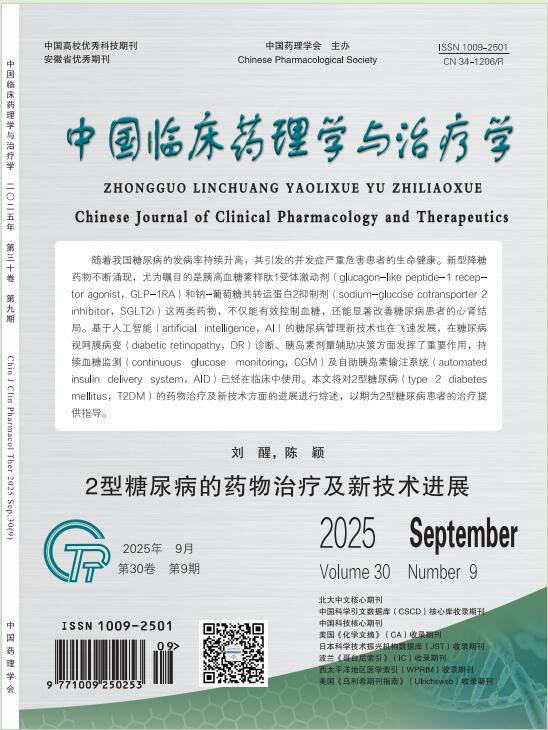Effects of different end-tidal sevoflurane concentration on cisatracurium produced neuromuscular blockade in elderly patients
XIANG Xiao-bing, LIAN Yan-hong, WU Ying-li, YUAN Xiao-hong, LIU Zhao-fang
2014, 19(9):
1033-1036.
 Asbtract
(
268 )
Asbtract
(
268 )
 PDF (201KB)
(
446
)
References |
Related Articles |
Metrics
PDF (201KB)
(
446
)
References |
Related Articles |
Metrics
AIM: To discuss the effects of different end-tidal sevoflurane concentration on cisatracurium-produced neuromuscular blockade in the elderly. METHODS: Forty-five patients of ASAⅡ-Ⅲ undergoing abdominal surgery were randomly divided into three groups with 15 cases each,all patients were received general anesthesia. Anesthesia with propofol infusion (group P),0.5MAC sevoflurane (group S1) or 1.0 MAC sevoflurane inhalation (group S2) respectively. Group P,routine intravenous anesthesia induction,injectioned cisatracurium 0.15 mg/kg after anesthesia induction,and intubation was performed as soon as the T1 fell below 5%; group S1,inhalated 8% sevoflurane firstly,and regulated inhalation concentration to make the end-tidal sevoflurane concentration 0.5MAC,others same with group P; group S2,the end-tidal sevoflurane concentration 1.0MAC,others same with group S1. After performed tracheal intubation,groups to receive propofol TIVA(group P)or inhalation sevoflurane(group S1,group S2),the end-tidal sevoflurane concentration of group S1 was 0.5MAC,the end-tidal sevoflurane concentration of group S2 was 1.0MAC. The intubation time,the onset time,no-response time,the time of T1 5% recovery,the time of T1 25% recovery,the time of T1 75% recovery,recovery index,the 0.70 recovery time of TOF(T4/T1) and hemodynamic effects were recorded. RESULTS: There were no significant differences in the intubation time,the onset time and hemodynamics among three groups (P>0.05). Compared with group P,the time of T1 25% recovery was significant longer in group S1 (P<0.05). No-response time,the time of T15% recovery and the time of T1 25% recovery were significant longer in group S2 (P<0.05). Compared with group S1,the time of T1 25% recovery was significant longer in group S2 (P<0.05). Compared with group P,the time of T1 75% recovery,the 0.70 recovery time of TOF and recovery index were significant longer in group S1,S2 (P<0.05). Compared with group S1,the time of T1 75% recovery and the 0.70 recovery time of TOF in group S2 were longer(P<0.05). CONCLUSION: Sevoflurane inhalation can significantly enhance the neuromuscular block effect of cisatracurium in dose-dependent manner for the elderly, but the onset time is similar.


